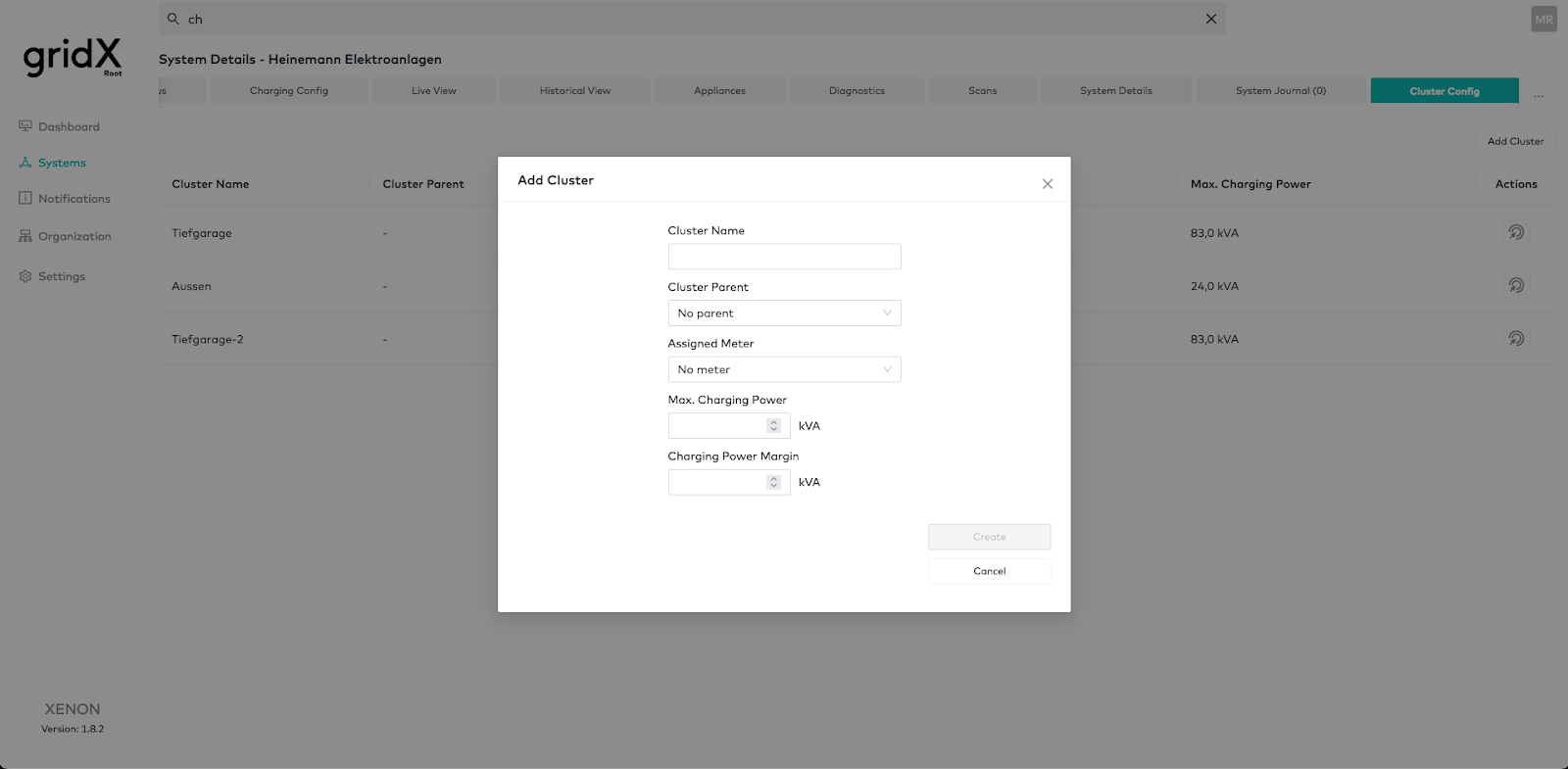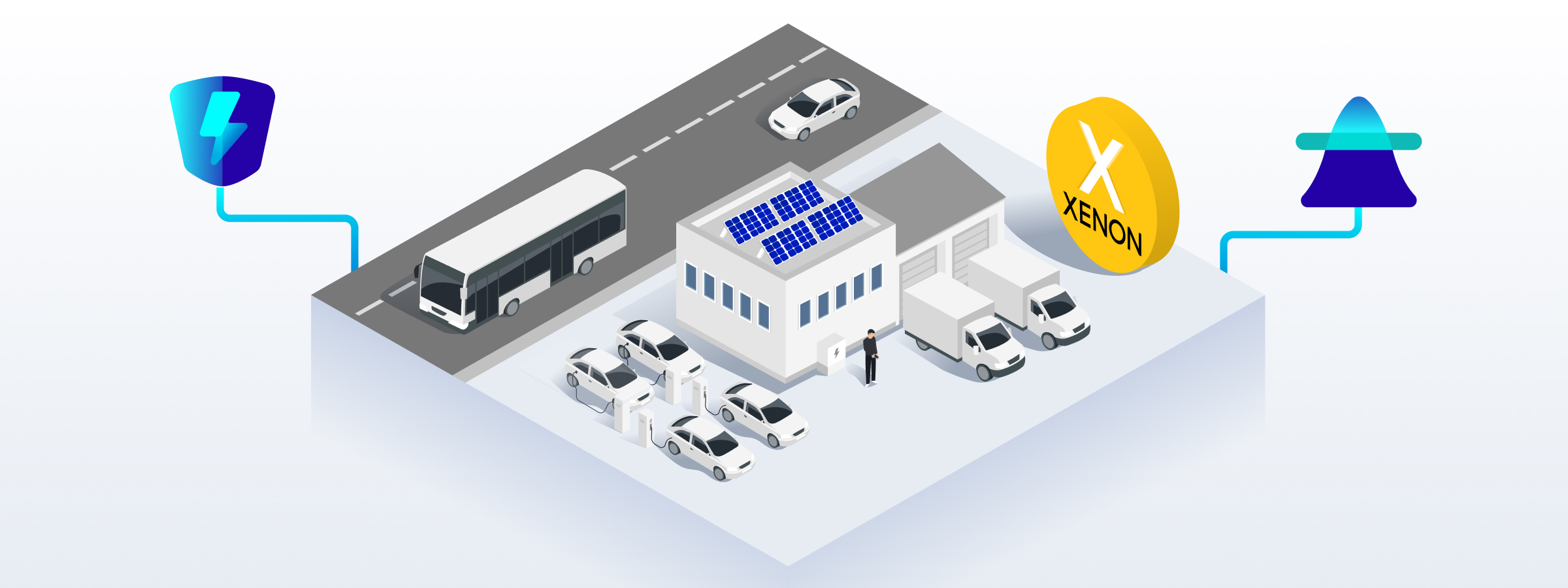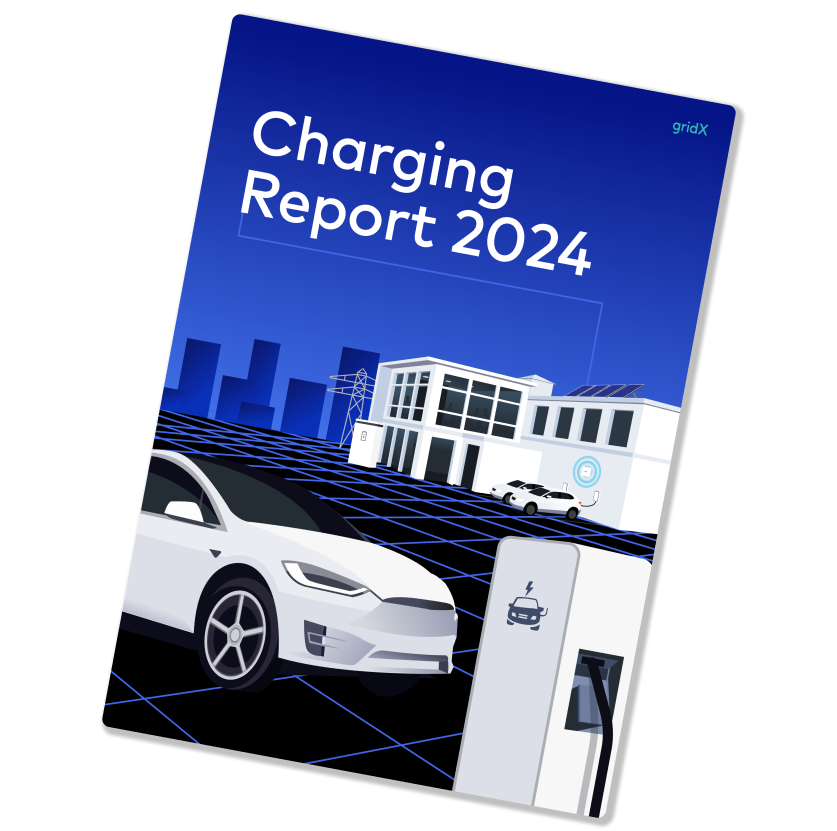CPOs face the challenge of having to install charging points as quickly as possible, even when the grid capacity is limited. That's the reason why we have to charge smarter, not harder – and gridX offers the solutions to make smart charging as smart as possible.
Charge smarter. Not harder.
At gridX, we are tired of overcomplicated charging processes and opaque operation costs. Charging should be smart. Not hard. Thus, we created a holistic solution, XENON, that helps CPOs reduce costs, but not charge speed. To ensure a solution that is customized to your business needs, flexibility and scalability is key. Suited to (almost) any use case from High Power Charging (HPC) to logistics, retail and hospitality – let’s take a look at some potential use cases supported by XENON:
High Power Charging
As a rather new and very advanced charging technology, HPC delivers rapid power charging with high capacities of over 100 kilowatts (kW). HPC enables direct current (DC) charging in different varieties, such as mid-power DC fast charging with 50 kW to 150 kW and high-power DC fast charging with above 150 kW (some reaching 350 kW or higher). But this also brings challenges as it requires more grid capacity and can easily lead to overloads. The costs for expanding grid connection points are significant, as modern HPC charging parks require a connection capacity in the megawatt (MW) range. This often involves a connection to the medium-voltage grid, which is more costly. This makes it all the more important to use the available power as efficiently and intelligently as possible with XENON.
Logistics
To ensure a smooth operation with an electricity-powered fleet, a balanced and anticipatory charging strategy is key. With electric fleets that mostly operate during set times of the day and charge at set times in the evening, overloading and charging during peak hours can become quite challenging and expensive. Together with Swiss Post we implemented our energy management system to ensure that the capacity of the grid connection point (GCP) is not exceeded. This way Swiss Post was able to efficiently operate large electric delivery fleets and complex charging infrastructure at a wide range of locations.
Destination charging
Whether it’s in office buildings, in retail or hospitality – it is important to offer EV charging stations as more and more people have made the switch to EVs and want to charge their vehicles while being at home, on vacation or on business trips. But when many people with different schedules and preferences are coming and going, the charging stations have to be balanced with the building load, which can be a difficult task in itself. Further, it is exceptionally suitable to extend your charging infrastructure with the use of a photovoltaic (PV) plant or battery storage, as the EVs have long downtimes during the day. Accordingly, it makes sense to either implement these technologies directly or keep them in mind to plan with foresight and resource efficiency.
The CPO’s dynamic duo: Grid Protector and Peak Shaver
Now that we know in which use cases XENON can excel, let’s dig into our XENON toolbox and take a closer look at the dynamic duo for CPOs: the Grid Protector and the Peak Shaver module – both responsible for efficient EV charging.
Grid Protector
True to the motto “charge more pay less”, the Grid Protector manages charging station loads to avoid violation of grid limits. It is able to reduce fees and enables better monitoring and managing of large sites. If you decide to choose XENON for your load management solution, the platform will provide the necessary flexibility for any variety of sites and projects. The Grid Protector module optimally manages the power distribution to all EV charging stations, while also taking the building load into account, to ensure the defined power constraint limit at each site is never breached.
Peak Shaver
Peak Shaving allows operators to reduce electricity expenses by minimizing peak electricity demand without limiting charging volume. Sounds too good to be true? Peak shaving, also called load shedding or peak load shaving, is a strategy that allows consumers or CPOs to proactively manage their energy usage to minimize short-term spikes in demand. Peaks can be shaved on both the demand and the supply side.
The five point plan to become a smooth (charge point) operator
Now that you know our dynamic duo, let’s combine these two modules and take a look into the features they come with to ensure a smooth operation and make you a smooth (charge point) operator in five simple steps!
1. Stay within grid limits and minimize fees
A cornerstone of the Grid Protector module is dynamic load management (DLM). Dynamic load management considers the load at your grid connection point in real time and adjusts the power supplied to the charging stations accordingly. Dynamic load management provides two main benefits: The first is that overloads are avoided to minimize grid fees and the second is that the charging power is only limited in periods of high base loads. This ensures that EVs can always charge at maximum load within capacity limits. This way you can operate more charging points on existing infrastructure, save on grid tariffs and never have to worry about overloads. In comparison to cloud-based dynamic load management, DLM with a local gateway enables faster reaction time, offline capability and holistic management through connection to all local assets.This is best for medium or big sites with over 10 charge points.
.jpg)
Let’s combine that with 15-minute optimization. Most grid operators bill according to the average peak within 15-minute intervals. XENON’s peak shaver allows users to benefit from this practice and optimize for 15-minute averages. At the end of a 15-minute window, power consumption can be adjusted dynamically (meaning power is either limited or released) so that the average power value limit across the 15-minute period remains stable to optimize fees. This is a particularly common method for CPOs who benefit from reduced network charges by the grid operator.
2. Optimize more complex sites
EV charging stations are typically connected directly to the main distribution, which, in a standard electrical layout, is protected by the site's main fuse. With this setup, each charging station can reach its maximum supported charging power, limited only by the maximum grid connection current per phase. This layout requires only one control loop to ensure the grid threshold isn't exceeded.

However, some sites have more complex multi-fuse distribution networks, potentially with three sub-tier levels under the main fuse. This complexity can easily lead to overloads at different points, requiring a multi-level control loop to ensure that the defined maximum current isn't surpassed at any level. When additional assets likePV systems and batteries are added, optimizing energy flows at each level becomes even more intricate. This emphasizes the need for a comprehensive multi-fuse algorithm that automatically considers all multi-level constraints.


Clustering can also be used to group charging stations independent of the multi-fuse feature. For example, chargers could be grouped into different clusters based on the parking lot they are located in or if they are AC or DC, even if the site has no sub-distributions. Here, optimization is focused on the level of the main grid connection point. Bringing the assets online into clusters and controlling their energy flows at each level makes it easier and more cost effective to increase the number of charging points across a site. So more charging stations don’t have to mean increased complexity.
3. Meet the requirements of any charging situation
Enhance your charging experience with the value of charging strategies, which enhance charging convenience. A charging strategy is the logic used for distributing the available charging capacity among EV charge points at a given site. As uncontrolled charging can lead to overloads or higher costs, these charging strategies ensure that each site meets its own specific requirements and goals. Our XENON Grid Protector module comes with different types of charging strategies:
Proportional charging ensures each driver always gets where they need to go. This requires information such as departure time and the minimum required state of charge (SoC) from the EV driver that can be inputted via a user interface, such as a tablet, which the CPO can use to communicate information to XENON. The platform calculates a proportionality factor based on the time a vehicle will be parked and the amount of energy needed for charging, which is extremely useful for destination charging.
Scheduled charging focuses on minimizing emissions while meeting mobility needs. It is especially suitable for charging EVs at locations where the charging power must be limited to a fixed kW output. This approach is very effective for several reasons. In terms of 24-hour schedule charging, it enables time control of the maximum available power. When combined with PV it enables a shift load curve that is covered by PV to limit charging power as much as possible during unfavorable weather conditions. It can also comply with the DSO’s high load time window and is compatible with light dynamic tariffs and can limit available power according to weekdays.
Balanced charging distributes the available power evenly to all the connected charge points. It is particularly suitable when the mobility needs of EV drivers are unknown or when all EVs have the same priority.
Series charging maximizes charging distribution according to the motto “first come, first serve”. The prioritization takes place in a chronological order, where EVs that are plugged into the charging station first receive more of the available capacity. It is commonly used amongst semi-public charging locations, for example in hotels, at en-route charging stations on highways or at restaurants.
PV surplus charging minimizes emissions while meeting mobility needs. It prioritizes the utilization of PV surplus energy to charge the vehicles and is a suitable strategy for charging EVs at locations, where the charging power must be limited to a fixed kW output.

4: Create your own custom solutions on top
Every site and every CPO has their own specific requirements that must be met. This is why gridX’s API allows companies to build their own solutions – from a mobile app to a comprehensive CPO dashboard. It allows companies to leverage the data insights provided by XENON. One CPO, for example, created their own CPO dashboard, which integrated data from XENON and other tools (for example, from the router or using OCPP) to give them the ultimate overview over their charge sites, more easily troubleshoot issues and predict maintenance needs in advance.

5. Go above and beyond grid capacity with PV and batteries
Let’s take it up a notch and expand your site with additional assets, managed by an advanced energy management system (EMS). This not only maximizes the use of renewable energy, but also reduces grid dependence and improves resilience. By installing solar PV panels, you can utilize renewable energy that is generated directly at your site. This energy can then be used to charge EVs during the day, reducing reliance on grid electricity. If you have excess solar energy, you can either feed it back into the grid or store it for later use with the help of storage systems, which is beneficial since cars only charge briefly at full power.
If combined with a battery, the EV can charge at full capacity over the full cycle and is no longer constrained by the grid connection. This is particularly useful when pairing HPCs with batteries to better manage their larger loads. As an additional benefit, when holistically managed, batteries also level the load curves of charging sites to maintain the grid’s balance and minimize fees.

The time for fast and smart EV charging is now
According to Akash Roshan, Senior Product Manager at gridX, “The demand for EV charge points in Europe, particularly fast chargers, is at an all-time high. Now, to overcome issues of cost, time and rising complexity, we must make charging smart. With additional control over charging infrastructure and automatic load shifting, we can reduce peak loads and not only minimize the impact on charging convenience, but actually improve it.”
XENON offers a holistic energy management solution paired with a user-friendly dashboard and energy experts that guarantee a smooth rollout. All these features work together to ensure an easy operation of the charging infrastructure under the maxim: reduce costs and increase efficiency and user-friendliness. The e-mobility revolution needs adaptable solutions that scale alongside the increasing demand for more and faster charge points.



